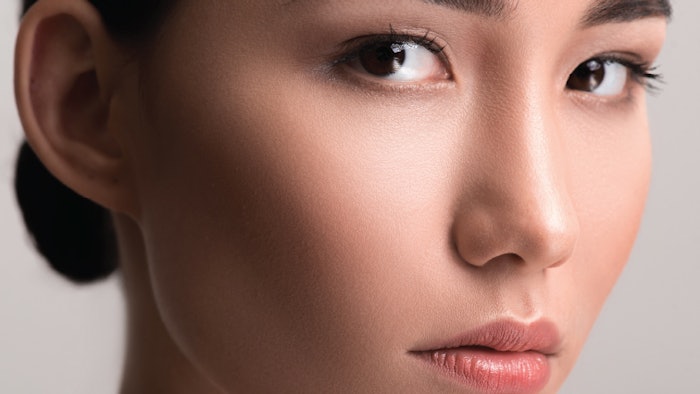
Read the complete article in our September 2022 digital magazine...
From March to early June 2022, the cosmetic industry in the Asia-Pacific region has experienced important regulatory changes that center on finished product management, children's cosmetics, cosmetic ingredient restrictions, testing methods, new cosmetic ingredient approvals, labeling, etc. Following is an overview.
China: STSC 2022
On March 31, 2022, the China National Institutes for Food and Drug Control (NIFDC) opened a month-long public consultation on the draft titled, “Safety and Technical Standard for Cosmetics 2022,”1 (draft STSC 2022). This document aimed to supersede the existing “Safety and Technical Standards for Cosmetics 2015”2 (STSC 2015) as the new overarching technical standard for cosmetic safety supervision and testing, and thereby better align with China’s new cosmetics regulations.3
Compared with STSC 2015, the basic framework of draft STSC 2022 remains unchanged but other changes include:
- Revising the list of prohibited, restricted and permitted ingredients in cosmetics. For example, ingredients such as formaldehyde (CAS No: 50-00-0) and nitromethane (CAS No: 75-52-5) are newly banned in cosmetics; toluene (CAS No: 108-88-3) is added as a new restricted ingredient; ethyl lauroyl arginate HCL (CAS No: 60372-77-2) is added as a new permitted preservative.
- Based on the previous revisions, adding four physical and chemical testing methods, eight toxicological testing methods and two human body efficacy evaluation methods; in addition, making revisions to 15 physical and chemical testing methods, two toxicological testing methods, etc.
- Modifying content that is inappropriate for the current regulatory practice.
- Standardizing and improving some terms and expressions.
China: Children’s Cosmetics
Four months after the implementation of China's first regulations on children’s cosmetics, the “Supervision and Administration Provisions on Children Cosmetics,”4 China NIFDC released the draft of “Technical Guidelines for Children Cosmetics”5 on April 11, 2022, for public comment. The draft guidelines spell out the basic requirements for children’s cosmetics including requirements for the product name and related dossiers, formula and ingredient use, executive standard, labeling, testing report and safety assessment report.6
Highlights of the draft guidelines include:
- Refining the requirements for the safety assessment of children’s cosmetics, specifying they be exposure-oriented and conducted in combination with children's physiological characteristics, product application methods, application areas, application amount, residues, etc.
- Clarifying the specific requirements for children's sunscreens, especially in terms of formulations, claims and labels. For example, there should be no more than three types of chemical sunscreen agents used in children’s sunscreens, and the amount used should be lower than that of adult sunscreens. Children’s sunscreens should not claim "strong sun protection."
- Clarifying the requirements for imported children’s cosmetics whose formulas are specifically designed for the Chinese market
- Clarifying the range of physicochemical indicator pH values of children’s cosmetics.
- Introducing more stringent requirements for ingredient use, labeling, claims, etc., of children’s cosmetics.
China: Cosmetic Quality and Safety Supervisor
China’s new cosmetic regulation, “Cosmetic Supervision and Administration Regulation” (CSAR),7 requires cosmetic registrants, notifiers and entrusted production enterprises to be equipped with “a person in charge of cosmetic quality and safety,” to undertake corresponding product quality and safety management and product release responsibilities...
Read more in the September issue...
References
- ChemLinked. (2022, March 31).Safety and technical standards for cosmetics 2022 (draft for comments) . Available at: https://cosmetic.chemlinked.com/database/view/1374
- ChemLinked. (2015, December 23).Safety and technical standards for cosmetics 2015 . Available at: https://cosmetic.chemlinked.com/database/view/168
- National Institutes for Food and Drug Control (NIFDC). (2022, March 31).Notice of NIFDC on soliciting public opinions on the revisions of the safety and technical standard for cosmetics . Available at: https://www.nifdc.org.cn/nifdc/xxgk/ggtzh/tongzhi/2022033116124546136.html
- ChemLinked. (2021, October 8).Supervision and administration provisions on children cosmetics . Available at: https://cosmetic.chemlinked.com/database/view/1319
- ChemLinked. (2022, April 11).Technical guidelines for children cosmetics (draft for comments) . Available at: https://cosmetic.chemlinked.com/database/view/1382
- National Institutes for Food and Drug Control (NIFDC). (2022, April 11).Notice on soliciting public opinions on the technical guidelines for children cosmetics (draft for comments) . Available at: https://www.nifdc.org.cn/nifdc/xxgk/ggtzh/tongzhi/2022041116184660325.html
- ChemLinked. (2020, June 29).Cosmetic supervision and administration regulation . Available at: https://cosmetic.chemlinked.com/database/view/1094











